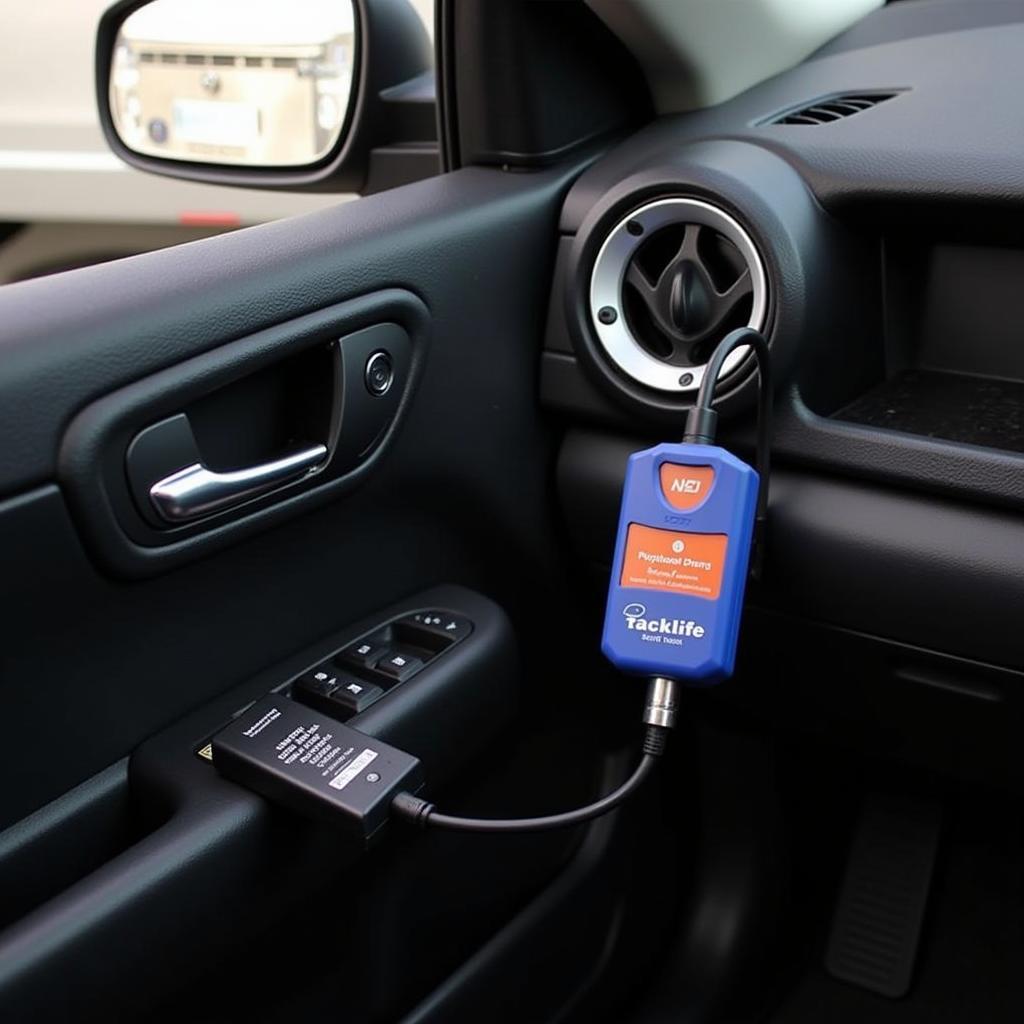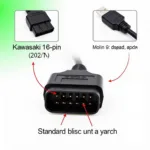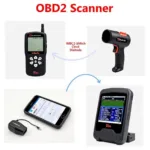The Tacklife OBD2 scanner is a valuable tool for car owners, providing insights into your vehicle’s health and performance. However, encountering a “Tacklife OBD2 link error” can be frustrating, especially when you’re in the middle of diagnosing a car problem. This comprehensive guide will walk you through the common causes of this error and provide practical solutions to get you back on track.
Understanding the Tacklife OBD2 Link Error
A Tacklife OBD2 link error simply means your scanner cannot establish a stable connection with your car’s onboard computer. This communication breakdown prevents the scanner from retrieving diagnostic information.
Common Causes of Tacklife OBD2 Link Errors
Before diving into solutions, it’s crucial to understand the potential culprits behind this error. Here are some common causes:
- Faulty OBD2 Port: A damaged, loose, or dirty OBD2 port on your vehicle can disrupt the connection.
- Defective OBD2 Cable: A frayed, broken, or poorly manufactured OBD2 cable can hinder communication.
- Incompatible Software or App: Using outdated, incompatible, or corrupted software with your Tacklife scanner can lead to connection issues.
- Bluetooth Connectivity Issues (Wireless Scanners): For wireless Tacklife scanners, problems with Bluetooth pairing, signal interference, or range limitations can cause link errors.
- Vehicle Battery Issues: A weak or dying car battery may not provide sufficient power for the OBD2 connection.
- Blown OBD2 Fuse: A blown fuse related to the OBD2 port can interrupt the flow of electricity and prevent communication.
Troubleshooting Tacklife OBD2 Link Errors
Now that you know the potential causes, let’s explore the solutions:
1. Check Your OBD2 Port
Start by visually inspecting your car’s OBD2 port. Look for any bent or damaged pins. If the port seems dirty, use compressed air or a cotton swab with rubbing alcohol to clean it gently.
2. Inspect the OBD2 Cable
Examine the OBD2 cable for any visible damage like cuts, frays, or loose connections. If possible, test the scanner with a different OBD2 cable to rule out cable issues.
3. Verify Software Compatibility
Ensure that you are using the correct software or app version compatible with your Tacklife OBD2 scanner model. Check the manufacturer’s website or user manual for the latest software updates.
4. Troubleshoot Bluetooth Connections (Wireless Scanners)
For wireless scanners:
- Ensure Bluetooth is Enabled: Double-check that Bluetooth is turned on both on your smartphone or tablet and your Tacklife scanner.
- Forget and Re-pair Devices: Go to your device’s Bluetooth settings, “forget” the Tacklife scanner, and then re-pair it.
- Minimize Interference: Keep your smartphone or tablet close to the scanner during use and avoid areas with potential signal interference (e.g., other electronic devices).
5. Check Your Vehicle’s Battery
Make sure your car battery has sufficient voltage. A weak battery can disrupt the OBD2 connection. If you suspect battery issues, have it tested and replaced if necessary.
6. Check the OBD2 Fuse
Consult your vehicle’s owner’s manual to locate the OBD2 fuse. Inspect the fuse for any signs of being blown. If it’s blown, replace it with a new fuse of the correct amperage.
When to Seek Professional Help
If you’ve exhausted all troubleshooting steps and are still experiencing a Tacklife OBD2 link error, it’s advisable to seek professional assistance. A qualified mechanic or automotive electrician can diagnose any underlying electrical or vehicle-specific issues that might be causing the problem.
Conclusion
A Tacklife OBD2 link error can be a temporary hiccup or a sign of a more significant issue. By following these troubleshooting tips, you can often resolve the problem quickly and get back to diagnosing your car.


